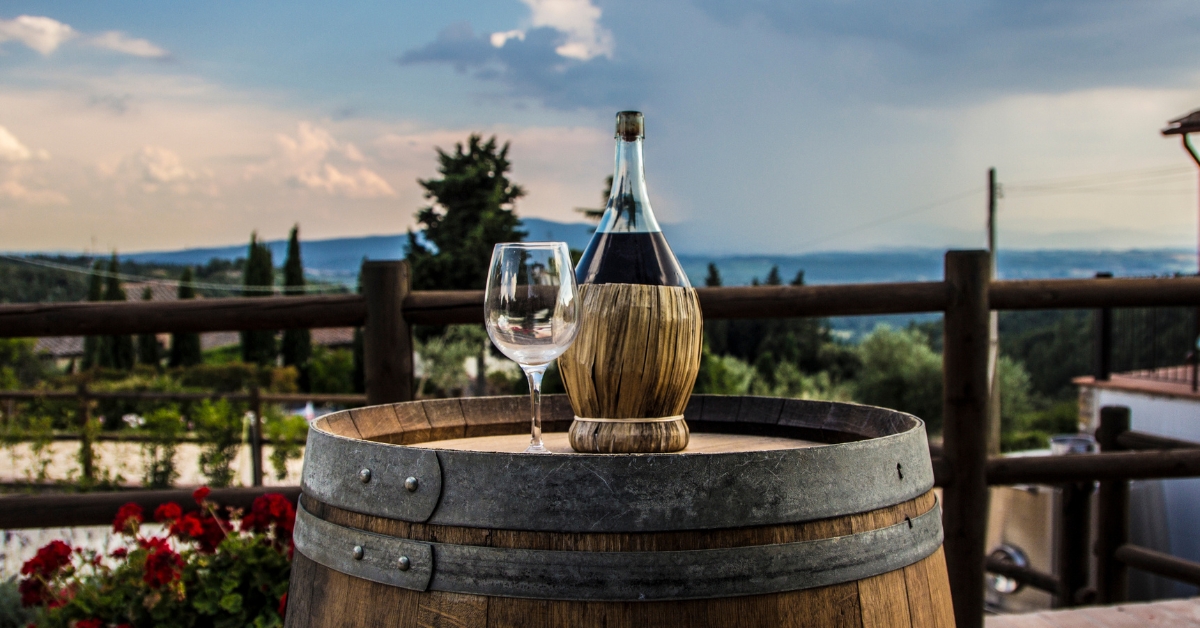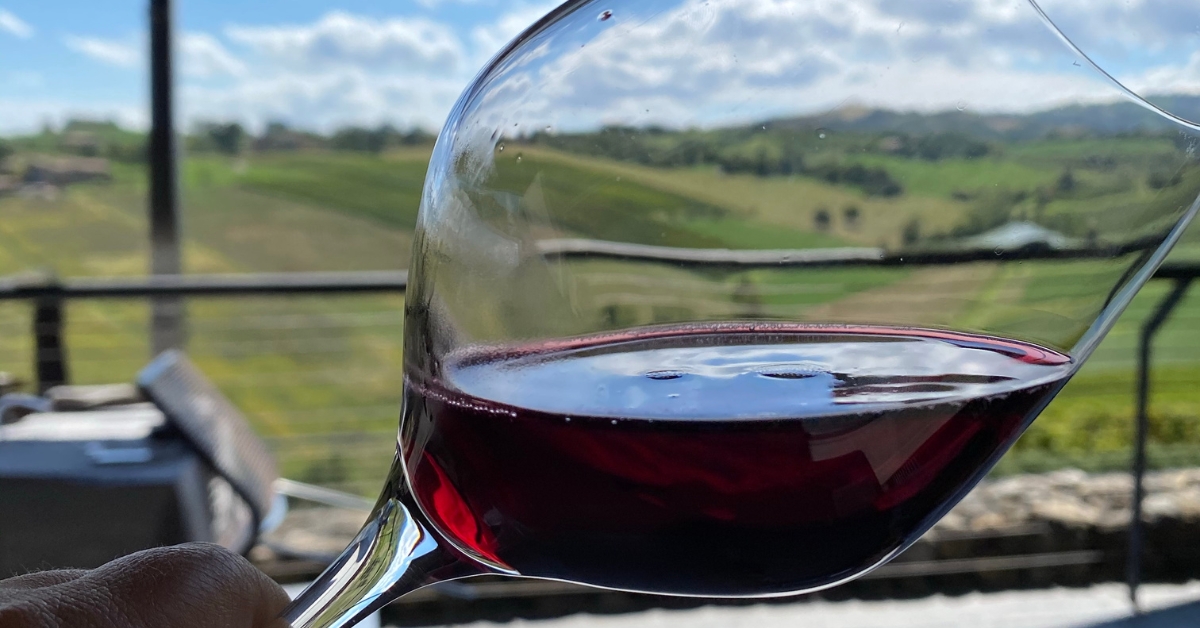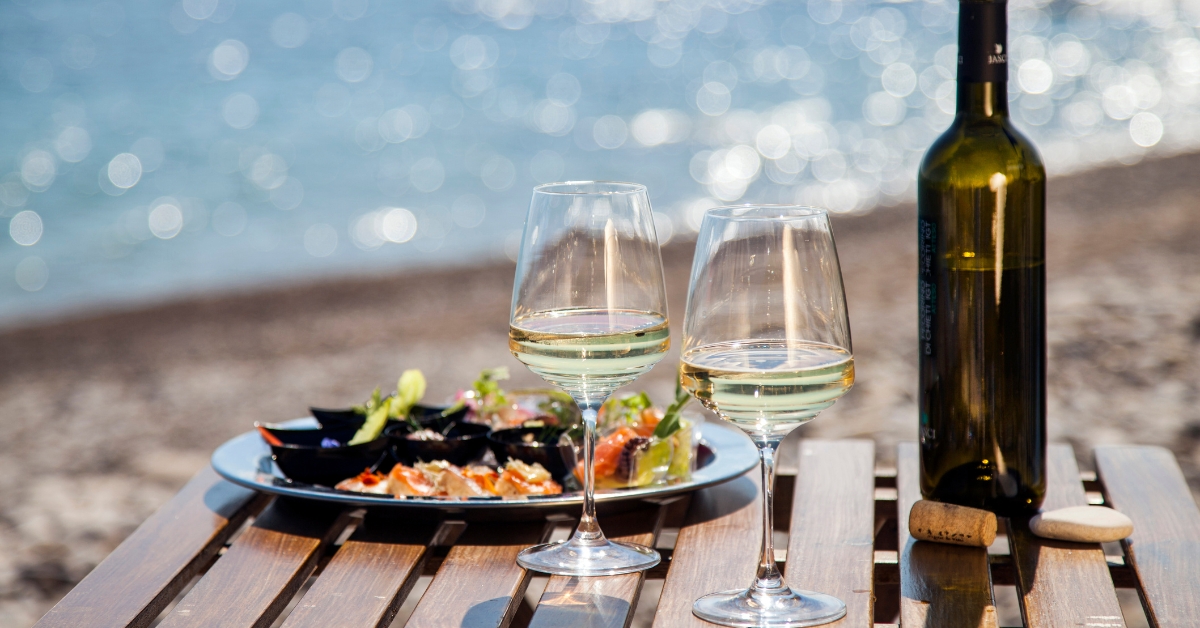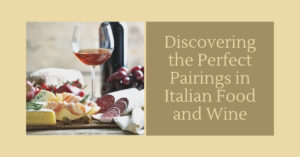Italy is not just famous for its rich history, breathtaking landscapes, and exquisite cuisine but also for its outstanding contribution to the world of wines. With a wine-making tradition that dates back thousands of years, Italy prides itself on producing some of the most sought-after wines globally.
From the sun-kissed vineyards of Tuscany to the rugged terrains of Piedmont, each region offers distinctive flavors and aromas, making Italian wines a must-explore for enthusiasts and connoisseurs alike. In this article, we will uncover the stories behind 11 top Italian wines that every wine lover needs to know, offering a taste of Italy’s unparalleled vinicultural heritage.
1. Barolo
Often hailed as the ‘King of Wines’ in Italy, Barolo is a robust red wine hailing from the Piedmont region, particularly around the fog-covered hills of Langhe. Made exclusively from the Nebbiolo grape, Barolo exhibits a rich garnet color with age, evolving from its notoriously tannic youth to a complex and enigmatic maturity.
Characterized by its high acidity and tannin levels, it boasts flavors of tar, roses, cherries, and truffles. Barolo requires at least 38 months of aging, of which 18 must be in wood barrels, leading to its distinctive depth and intensity. This wine pairs perfectly with the rich, hearty flavors of Italian cuisine, making it a prized selection for any serious wine enthusiast’s collection.
2. Brunello di Montalcino
Brunello di Montalcino stands out as a crown jewel among Italian red wines, originating from the picturesque hills around Montalcino in the Tuscany region. This sublime wine is crafted exclusively from Sangiovese grapes, known locally as ‘Brunello.’ Renowned for its bold flavor profile, it presents layers of cherry, blackberry, and spice, with nuances of leather and earth as it ages.
To achieve its full-bodied elegance, Brunello di Montalcino undergoes extensive aging—a minimum of five years, with at least two in oak barrels. Its robust structure and rich taste make it an ideal companion to the game, roasted meats, and aged cheeses, embodying the essence of Tuscan sophistication.
3. Chianti Classico
Chianti Classico, a name synonymous with Italian wine excellence, represents the heart of Tuscany’s winemaking tradition. Its roots stretch back centuries, lying within the scenic bounds of Florence and Siena.
Aged in oak, it gains complexity and a velvety texture. Chianti Classico carries a requisition for at least one year of aging, ensuring its characteristic finesse. It pairs wonderfully with the rich flavors of Italian cuisine, such as pasta dishes and red meats, capturing the essence of Tuscan gastronomy.
4. Amarone della Valpolicella
Amarone della Valpolicella, a prestigious red wine from the Veneto region, is renowned for its rich, intense flavors and opulent texture. This wine is produced using a unique method where grapes (primarily Corvina, Rondinella, and Molinara) are left to dry for several months before fermentation, concentrating their sugars and flavors.
The result is a full-bodied wine with a characteristically high alcohol content, offering a complex bouquet of dark fruit, chocolate, and spices. Amarone is perfect for savoring alongside bold dishes or as a meditative drink, epitomizing the craftsmanship and tradition of Italian winemaking. Its deep flavors and lingering finish make it a favorite among wine aficionados seeking a luxurious experience.
5. Prosecco
Prosecco is the effervescent gem of Italy’s wine repertoire, originating from the Veneto region. Celebrated for its light, frothy personality, Prosecco is produced from the Glera grape and shines with flavors of green apple, honeydew, pear, and fresh cream. Unlike Champagne, Prosecco is made using the Charmat method, where fermentation occurs in steel tanks, making it more affordable yet equally delightful.
Its crisp acidity and lively bubbles make Prosecco a versatile companion to a wide range of dishes, or a refreshing choice for celebratory occasions. Its approachability and elegance encapsulate the Italian spirit, making Prosecco a beloved choice worldwide.
6. Sangiovese
Sangiovese, the quintessential Italian grape, is the backbone of many prestigious wines, including Chianti and Brunello di Montalcino. This versatile grape thrives across the central regions of Italy, embodying the spirit of the Italian terroir with its vibrant acidity and rustic charm.
These wines are notable for their high acidity and firm tannins, making them excellent partners to the rich and hearty dishes that define Italian cuisine. Sangiovese’s adaptability and complex flavor profile ensure its place as a pillar of Italian winemaking.
7. Barbaresco
Barbaresco, often seen as the queen to Barolo’s king, is another gem from the Piedmont region, made exclusively from Nebbiolo grapes. Like Barolo, Barbaresco is distinguished by its rich complexity and high tannin levels, but it offers a slightly softer, more approachable character in its youth. It boasts elegant aromas of red fruit, licorice, and floral notes, with an alluring spice touch as it ages.
Demanding less aging than Barolo, Barbaresco matures after just 24 months, with at least 9 months in wooden barrels. This slightly gentler aging process allows Barbaresco to enchant palates earlier, making it a treasured part of Italy’s vinous landscape.
8. Pinot Grigio
Pinot Grigio, Italy’s most popular white wine, primarily flourishes in the cooler regions of the country, like Trentino-Alto Adige. This light-bodied white wine is appreciated for its crisp, clean taste and ability to pair well with a variety of foods. Its flavor profile often includes delicate notes of green apple, pear, honeysuckle, and almond.
Pinot Grigio is typically enjoyed young to savor its freshness and vibrant acidity. Its universally appealing taste and refreshing mouthfeel have made it a favorite among wine enthusiasts worldwide, embodying the Italian knack for creating wines that perfectly complement a wide array of dishes.
9. Lambrusco
Lambrusco, a sparkling red wine that hails from the heart of Italy’s gastronomic region, Emilia-Romagna, offers a delightful contradiction to the uninitiated. Known for its fruity, slightly sweet profile, it presents flavors of strawberry, blackberry, and hints of spice, balanced with a pleasant tartness and effervescence that cleanses the palate.
This versatile wine comes in various styles, from sweet to dry (secco), catering to diverse tastes. Traditionally served chilled, Lambrusco pairs exceptionally well with regional cuisine, particularly fatty meats and rich pasta dishes, making it a festive choice for gatherings and a testament to Italy’s joyous food and wine culture.
10. Montepulciano d’Abruzzo
Montepulciano d’Abruzzo is a robust, full-bodied red wine cherished for its deep flavors and affordable price point, originating from the Abruzzo region of Italy. Its approachable tannins and well-rounded acidity make it a versatile pairing with a variety of foods, including pizza, pasta with red sauces, and grilled meats. Montepulciano d’Abruzzo offers an exquisite taste of Italian winemaking traditions, presenting an excellent balance of quality and value.
11. Super Tuscan Wines
Super Tuscan wines emerged in the late 20th century, breaking from Italian wine traditions by blending indigenous grapes like Sangiovese with non-traditional varieties such as Merlot and Cabernet Sauvignon. These innovative wines, initially not adhering to strict appellation laws, were classified as table wines before gaining international acclaim for their quality and complexity.
Today, Super Tuscans enjoy a prestigious status, showcasing the versatility and creativity of Tuscan winemakers. With rich, bold flavors, they pair excellently with hearty dishes, embodying the pioneering spirit that has defined their ascent in the world of fine wines.
In conclusion,
Italy’s wine-making heritage is an ode to its land, culture, and generations of winemakers who have mastered the art of coaxing unique flavors from the grapes they cultivate. From bold, robust reds to crisp, effervescent whites, Italian wines offer an unparalleled sensory experience that reflects the country’s diverse landscapes and culinary traditions.
















